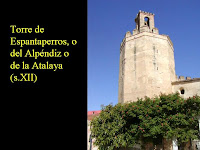Being at the end of our second month we’ve reached at a good point in getting acquainted with each other through out the posts and comments the students have made. Once again, all posts are very interesting and show your efforts and surely your teachers are congratulating you for that.
Willing to embellish your continuous presence on our blog, we came to the thought of choosing the virtual prizes of the month from the sea world and specifically among the creatures living in the reefs due to their variety and fine colours
 Fran from Spain wins the famous clown fish, for her post was the most popular this month (11 comments). Clown fish, well-known from the movie "Finding Nemo", communicate via sounds. Researchers found out which technique they use to talk with each other: They move their jaws and teeth. With movements of their jaws and the friction of the teeth they produce different sounds and crack noises. Clownfish are native to warmer waters of the Indian and Pacific oceans, including the Great Barrier Reef and the Red Sea.
Fran from Spain wins the famous clown fish, for her post was the most popular this month (11 comments). Clown fish, well-known from the movie "Finding Nemo", communicate via sounds. Researchers found out which technique they use to talk with each other: They move their jaws and teeth. With movements of their jaws and the friction of the teeth they produce different sounds and crack noises. Clownfish are native to warmer waters of the Indian and Pacific oceans, including the Great Barrier Reef and the Red Sea.Second prize (11 comments on her post too) goes to Stefania from Italy and it is Angelfish. It originates from the Amazon River, Orinoco River and Essequido River basins in tropical South America. Its body shape allows them to hide among roots and plants, often on a vertical surface. Naturally occurring angelfish are frequently striped longitudinally, colouration which provides additional camouflage.
Third prize the guppy, also known as the millionfish, is one of the most popular freshwater aquarium fish species in the world (females 4–6 centimetres long, males 2½–3½ centimetres long). Guppies are native to Barbados, Brazil, Guyana, Netherlands Antilles, Trinidad and Tobago, the US Virgin Islands, Venezuela. This one goes to Maria Tersenidou from Greece (10 comments on her post).
Stefania from Italy (again!) is the top commentator of this month (10 comments) and her prize is a Brain coral. Brain corals are so called due to their generally spheroid shape and grooved surface which resembles an animal brain. They are found in shallow warm-water coral reefs in all the world's oceans. The life span of the largest brain corals is 900 years. Colonies can grow as large as 6 or more feet (1.8 m) high. Brain corals extend their tentacles to catch food at night and during the day, they use them for protection by wrapping them over the grooves on their surface.
Second prize is a precious coral or red coral and this goes to Rosemary from Italy (7 comments). The distinguishing characteristic is their durable and intensely colored red or pink skeleton, which is used for making jewelry. Red corals grow on rocky seabottom, typically in dark environments. The original species is found mainly in the Mediterranean Sea. It grows at depths from 10 to 300 m. In the underwater caves of Alghero, Sardinia (the "Coral Riviera") it grows at the depth of 4 m. The same species is also found at Atlantic sites near theStrait of Gibraltar and at the Cape Verde Islands. Other species are native to the western Pacific, notably around Japan andTaiwan; these occur at depths of 350 to 1500 m in areas with strong currents.
Pillar corals are a type of hard coral which live in the western Atlantic Ocean. They are one of the digitate corals which resemble fingers, or a cluster of cigars, growing up from the sea floor, but without any secondary branching. Pillar corals can grow to be up to 2.5 m tall. They can grow on both flat and sloping sea floors at a depth of between 1 and 20 m. This last prize goes to Fran from Spain (again...!) he sent 7 comments this month.
As an extra trophy for every winner we will offer them the opportunity to publish their next posts by themselves. Therefore, we welcome new blog editors! Congratulations to all of you!















 Archaeological provincial
Archaeological provincial  It is called Royal because two years before the King and Queen of Spain put the first stone in the beginning of his construction. It is a modern bridge, with rail for bicycles, investor as panoramic sight and joins the newest zone of the city with Elvas's Avenue that leads to Portugal, to the University, Fairground, medical services and fairground enclosures.
It is called Royal because two years before the King and Queen of Spain put the first stone in the beginning of his construction. It is a modern bridge, with rail for bicycles, investor as panoramic sight and joins the newest zone of the city with Elvas's Avenue that leads to Portugal, to the University, Fairground, medical services and fairground enclosures. 











